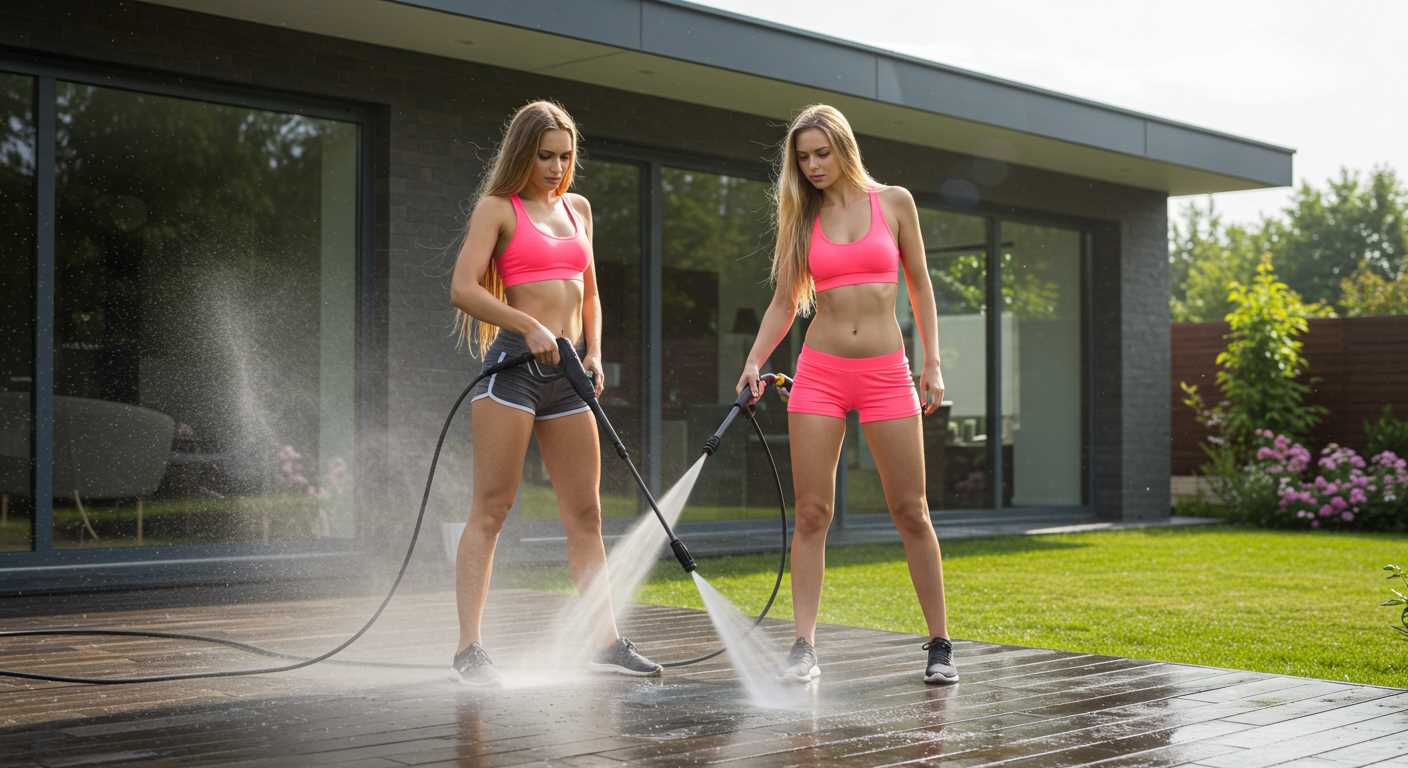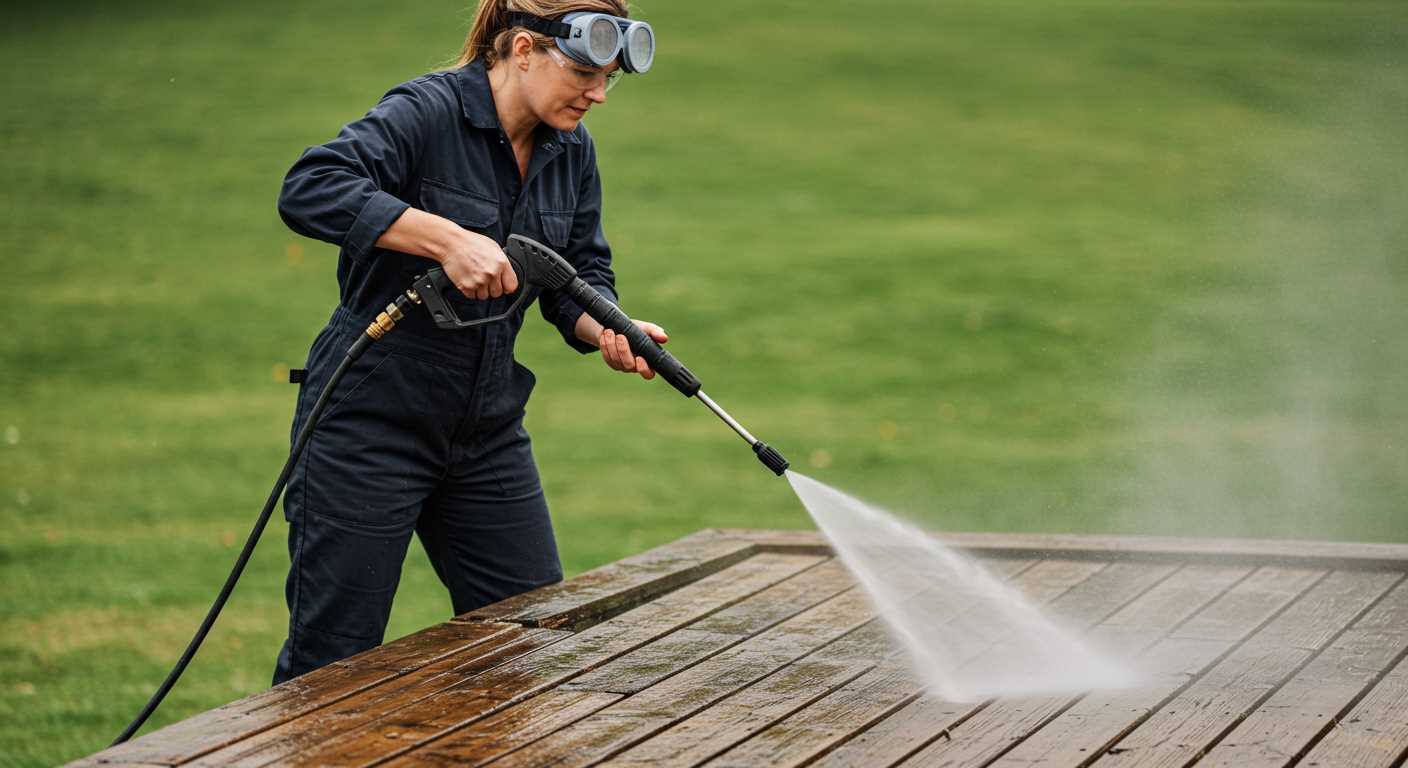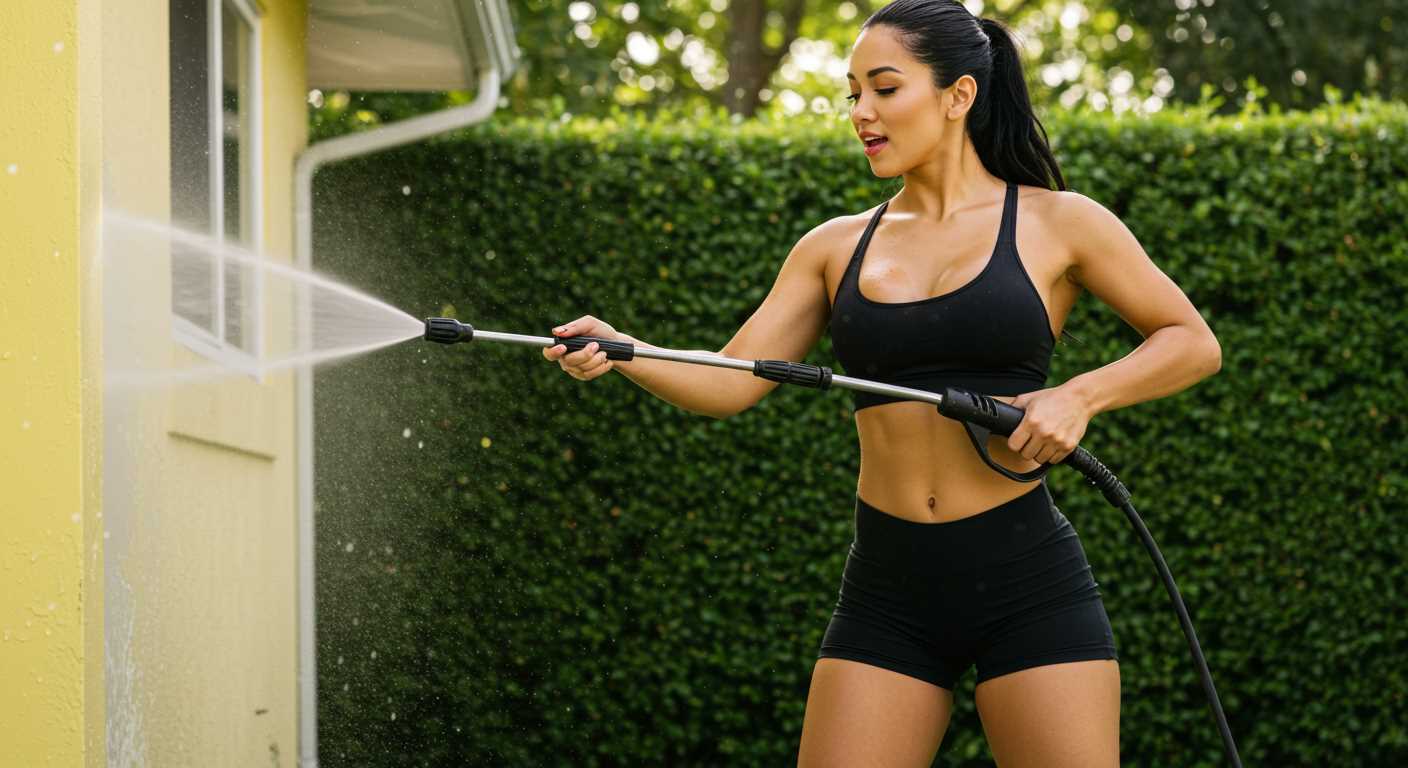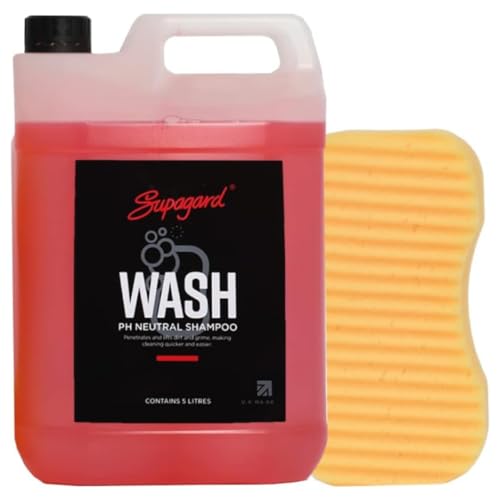



It is essential to regularly check the inlet filter for obstructions. A blocked filter restricts water flow, which can lead to overheating and damage to the internal components. Clean or replace the filter as needed to maintain optimal performance and prevent potential breakdowns.
Always use the correct type of liquid for your device. Using soaps or detergents not designed for high-pressure systems can lead to the formation of residues that clog internal valves and seals. Stick to manufacturer’s recommendations to ensure longevity and reliability of the machinery.
Monitor the temperature of the water being used. Excessive heat can cause seals to deteriorate and result in leaks. Installing a temperature gauge can provide helpful insights, allowing for timely adjustments during operation.
Regular maintenance is non-negotiable. Make it a habit to check the oil levels and condition, ensuring that all components are adequately lubricated to prevent wear and tear. Skipping routine service checks may lead to catastrophic results, which could easily be avoided.
Factors Leading to Washer System Breakdown
Regular maintenance is key. Neglecting to change the oil periodically can lead to overheating and subsequent issues. I recommend checking the oil level every few uses, especially after long sessions.
Using contaminated water significantly spurs wear and tear. Always ensure the water source is clear of debris and sediments. I’ve seen too many instances where unfiltered water led to internal clogging and reduced performance.
Inadequate water supply can cause serious hurdles. Ensure your source delivers sufficient flow rate; otherwise, you risk damaging components due to insufficient lubrication. I suggest using a flow rate of at least 5 gallons per minute for optimal performance.
Excessive running without breaks puts unnecessary strain on the entire assembly. I recommend allowing the unit to cool down every hour of operation to prevent overheating issues.
Overusing detergent beyond capacity can also create problems. While it enhances cleaning efforts, too much can lead to build-up and malfunction. Always follow the manufacturer’s guidelines on soap use.
Inconsistent pressure settings can lead to erratic performance and eventual breakdown. Make sure to adjust the pressure according to the cleaning task at hand, utilising the correct nozzle for different surfaces.
Environmental conditions play a role as well. Extreme temperatures, whether hot or cold, can affect seals and valves. Protect your equipment from harsh conditions whenever possible.
Inspecting the connections for leaks regularly is vital. Even small drips can exacerbate issues. Tighten loose fittings and replace worn-out seals to maintain optimal integrity.
Using the wrong fuel type for gas-operated machines is a common mistake. Always adhere to manufacturer specifications for fuel to avoid combustion issues that lead to significant damage.
Keeping components lubricated is essential. Regularly lubricate the O-rings and seals to ensure smooth operation and minimise wear over time. I find that preventative lubrication saves a lot of hassle.
Water Contamination and Its Impact on Pump Longevity
To prolong the life of your cleaning device, ensure that the water used is clean and free from impurities. Contaminated water can introduce particles, sediments, and minerals that create wear and tear on internal components, leading to premature breakdowns.
Types of Contaminants

Common contaminants include:
- Rust and metal shavings from corroded pipes
- Sand and silt from unfiltered sources
- Calcium and other mineral deposits from hard water
- Organic debris like leaves and dirt
Effects on Equipment
The presence of these impurities affects various parts of the unit:
| Component | Impact of Contamination |
|---|---|
| Seals | Abrasion and degradation, leading to leaks |
| Pistons | Scoring and wear, reducing efficiency |
| Valves | Clogging and malfunction, affecting pressure output |
Use a water filter or purifying system to eliminate these issues. Regular maintenance is also pivotal. Inspect the source routinely to ensure optimal performance and extend the lifespan of your cleaning equipment.
Insufficient Maintenance Practices Leading to Pump Damage
Regular servicing is paramount for prolonging the lifespan of any cleaning system. Neglecting scheduled maintenance can lead to various issues, including blockages, wear, or total breakdowns. I strongly recommend adhering to a strict maintenance routine to avoid costly replacements.
Inspection and Replacement of Filters
Dirty or clogged filters can severely hinder the performance of the equipment. During maintenance, I always check and, if necessary, replace the filters. This simple task helps to prevent debris from entering the internal components, which could lead to wear and eventual malfunction.
Lubrication of Moving Parts
Inadequate lubrication can lead to friction-related problems and accelerated wear. I consistently advise users to apply suitable lubricants to the moving parts as part of their maintenance routine. This practice ensures smooth operation and reduces the likelihood of breakdowns.
Overheating: Causes and Prevention in Pressure Cleaners
Ensure the unit has a sufficient water supply before operation. Low water flow can lead to excessive heat build-up, increasing the risk of component stress and eventual breakdown. Regularly check hoses for kinks and debris that may impede flow.
Cooling Systems and Maintenance
Inspect the cooling system regularly. Most machines feature cooling fins or other designs to dissipate heat. Dust and grime can accumulate over time, hindering performance. A routine cleaning regime will not only prolong longevity but also enhance performance.
Operating Conditions
Avoid using equipment in extreme temperatures. Excessive heat can impact functionality; conversely, colder environments can lead to freezing in the water lines. Always refer to manufacturer guidelines for optimal operating conditions.
How Improper Chemical Use Can Harm Pump Components
Always follow manufacturer guidelines regarding chemical compatibility. Improperly selected detergents can corrode seals, leading to leaks and reduced pressure output. Acidic or caustic substances can deteriorate the internal components, resulting in costly repairs.
Common Chemicals to Avoid
- Acid-based cleaners: These can quickly erode metal components.
- High-alkaline solutions: These may damage seals and O-rings.
- Non-recommended detergents: Stick strictly to approved brands and formulas.
Best Practices for Chemical Use

- Always dilute cleaning agents according to instructions.
- Test a small area first if you are unsure about a chemical.
- Flush the system with clean water after using any chemical solution.
- Store chemicals properly to prevent degradation and contamination.
Ignoring these practices can lead to premature wear and significant malfunctions. Regular inspections of seals and components after chemical use can help identify potential issues before they escalate. By adhering strictly to chemical guidelines, you can extend the lifespan of your equipment and ensure optimal performance.
The Role of Inadequate Water Supply in Pump Malfunction
Maintaining a sufficient water supply is fundamental for the proper functioning of a high-pressure cleaning device. Inadequate water flow can lead to various operational issues that may compromise the longevity of the unit.
Key Issues Resulting from Low Water Availability
- Overheating: Lack of water restricts cooling, causing overheating. This condition puts immense strain on internal components, leading to premature wear or total breakdown.
- Increased Pump Wear: Insufficient water flow can result in higher friction among moving parts. This causes accelerated degradation, ultimately diminishing performance.
- Loss of Pressure: When the water supply is insufficient, the system cannot generate the necessary pressure. It directly affects cleaning efficiency, leading to unsatisfactory results.
- Air Lock: Low water levels can trap air within the lines, creating air locks. This interrupts the flow and jeopardises the cleaning process.
Recommended Practices to Ensure Adequate Water Supply
- Always check the water source before operation. Ensure it can deliver the required pressure and flow rate.
- Utilise a water filter to prevent debris and sediment from clogging hoses and accessories.
- Inspect hoses for leaks or kinks that may reduce water flow.
- Regularly unclog any filters and lines to facilitate consistent water delivery.
By prioritising an ample water supply, you can significantly enhance the performance and lifespan of your cleaning equipment. Proper attention to water availability not only boosts efficiency but also protects against potential damage caused by insufficient flow rates.
Signs of Wear and Tear: When to Replace Your Pressure Washer Pump
Look out for unusual noises during operation. Grinding or knocking sounds may indicate internal damage. Regularly inspect for visible leaks; persistent fluid loss suggests seals or gaskets are compromised and may need replacement.
Pay attention to fluctuations in water flow. Inconsistent output might signal wear in valves or other components affecting performance. If you experience reduced pressure despite proper settings, it could mean that the internal parts are deteriorating.
Unexplained Performance Variations

Monitoring the unit’s performance is crucial. Should you notice a sudden decrease in efficiency or an increase in response time, it is likely that wear has occurred. Additionally, if there is excessive vibration during use, this often points to imbalance or disrepair in the assembly.
Maintenance Records and Usage Habits
Keep track of maintenance. Consistent lubrication and timely component replacement extend lifespan; however, if maintenance is neglected and nearing the expected lifespan, it’s prudent to consider replacement. Units that have been subjected to harsh environments or improper usage may also need earlier intervention.
Understanding the Importance of Correct Pressure Settings
Setting the appropriate force level is crucial for preserving the longevity of your cleaning device. Many users underestimate the significance of this adjustment, leading to wear on components, inefficiencies, and potentially debilitating breakdowns.
Optimal Pressure Levels for Different Tasks
Each cleaning duty demands a distinct force. For instance, using high levels while washing vehicles can result in paint damage, while low levels on tougher surfaces may not yield satisfactory results. Understanding the right setting can prevent unnecessary strain on internal parts, prolonging their operational lifespan.
Adjusting Settings Based on Environment
Conditions such as surface type and the presence of stubborn contaminants should dictate your force settings. Adaptability not only enhances cleaning efficacy but also mitigates the risk of damaging internal mechanisms. Regular checks and adjustments can lead to improved performance and reduced maintenance requirements.








